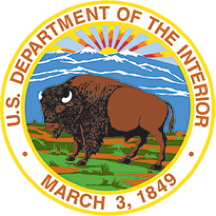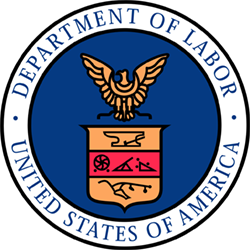A happy compromise between people-first and plain language
Find out how the National Institute of Corrections is using people-first plain language in its communications. See what words and phrases they’re changing.
The design of products, devices, services, or environments for people with disabilities
180 posts
Find out how the National Institute of Corrections is using people-first plain language in its communications. See what words and phrases they’re changing.
Managing government websites is a targeted exercise. Here are 5 steps to help you build and maintain a successful one.
Nine areas to focus on in the coming year to take your digital sites and services to the next level.
Trust is earned through consistency and commitment. Build sites that build trust by considering user needs, respecting people’s time, and avoiding customer experience pitfalls.
How do you make sure a website is accessible? This blog post outlines the four steps the Office of Natural Resources Revenue (ONRR - pronounced like "honor") at the U.S. Department of the Interior took to verify accessibility.— via Office of Natural Resources Revenue

The digital landscape has changed significantly since we launched the Go.USA.gov service in 2009. Over the last two years the team looked carefully at the program holistically, taking into consideration the future of the program, the current landscape related to using shortened URLs and alignment with strategic business goals. In early 2022 we made the difficult decision to initiate steps to sunset the service.— via USA.gov

Over 67 million people in the United States have a disability, constituting the largest diversity group in the country. Despite decades of advocacy and struggle, people with disabilities continue to experience significant gaps in health and well-being, educational attainment, employment, and wealth compared to people without disabilities. These gaps have been termed the “disability divide.” The purpose of this year’s National Disability Employment Awareness campaign at the National Institutes of Health is to educate staff regarding the divide and to celebrate those who help close the disability divide by advocating for people with disabilities.— via National Institutes of Health

Observed annually in October, NDEAM celebrates the contributions of America’s workers with disabilities past and present and showcases supportive, inclusive employment policies and practices. In recognition of the important role people with disabilities play in a diverse and inclusive American workforce, the theme for NDEAM 2022, Disability: Part of the Equity Equation.— via Department of Labor

Measuring and Justifying the Government Experience—Private sector organizations use revenue as the primary measurement to justify improving experiences. Many government services don’t have revenue as a lever, so how can we justify work to improve experience? The Office of Natural Resources Revenue (ONRR) leveraged a few metrics on their team that fall into three categories: laws and regulations, improving the experience for users, and saving time for employees.— via Office of Natural Resources Revenue

A group from the Multilingual Community noticed inconsistencies in access to languages other than English across government websites, and have started working on a solution.
Modern digital services require a close connection between federal agencies and contractors, as well as customers and other stakeholders. Use these five practical tips to attract and empower contractors who value diversity, equity, inclusion, and accessibility.
This question and answer session for our webinar, Language Connections: Tips to Create, Maintain, and Present Non-English Digital Content, can help you improve access to your multilingual digital content.
Sunshine Week (March 13-19, 2022) celebrates the Government in the Sunshine Act, which promotes greater transparency in government activities. Our mission at GSA is to deliver effective and efficient government services for the American people. To do so, we have to be transparent and accessible—by opening meetings to the public, ensuring that federal buildings and facilities are fully accessible to all people, and making information on documents or pages (web pages, PDFs, newsletters, etc.) open and accessible. Learn about some of our initiatives that best display these principles.
Creating a New Way for People To Discover Government Benefits—To make it even easier for everyone to find services and benefits without needing to understand government structure, we’re developing a new digital tool in partnership with 10x, GSA’s incremental technology fund. BEARS, the Benefits Eligibility Awareness Resource Service, is an important step forward in providing an integrated, simple solution for federal benefits to improve the customer experience and will eventually cover all federal benefits from all agencies.— via USA.gov

During the Digital.gov and Plain Language Community event, Results of the 2021 Federal Report Card, speaker David Lipscomb gave examples of web content that received both high and low scores in the 2021 Plain Language Report Card. Here’s what we learned.
Digital.gov
An official website of the U.S. General Services Administration